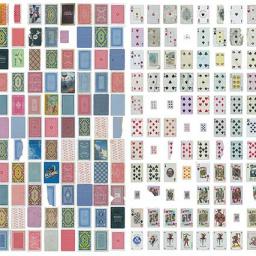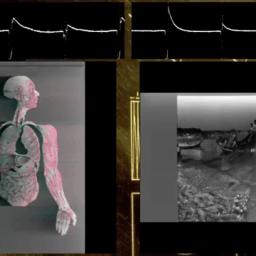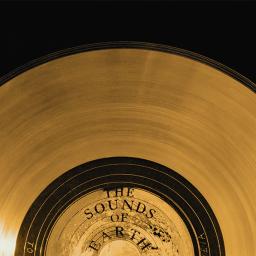 |
by Mark Frauenfelder on (#319XY)
People who suffer from chronic itching say it's more unbearable than pain. I'll never forget a 2008 story called The Itch in The New Yorker. It's about a woman whose scalped itched so much that "She had scratched through her skull during the night—and all the way into her brain."Chemical and Engineering News reports that a compound in the popular psychedelic plant Salvia divinorum was found to contain a compound that is found to provide itch relief to mice.Snip:Salvinorin A, a hallucinogen produced by the Mexican plant Salvia divinorum, holds promise for treating itch and pain because it activates the κ-opioid receptor while avoiding the μ-opioid receptor, a sister receptor that’s been associated with opioid abuse. Chemists have tried to synthesize salvinorin A so that they could alter the structure to sidestep the compound’s psychoactive effects while preserving its analgesic properties. But salvinorin A’s scaffold has been challenging to recreate.Now, a team of scientists at the California and Florida branches of Scripps Research Institute, as well as at the University of Southern California, report a 10-step total synthesis of 20-norsalvinorin A (ChemRxiv 2017, DOI: 10.26434/chemrxiv.5318188). The compound differs from salvinorin A by a single methyl group and binds to the κ -opioid receptor with an affinity similar to that of the natural product. When given to mice, it also provides itch relief.
|
| Link | http://boingboing.net/ |
| Feed | http://boingboing.net/rss |
| Updated | 2025-12-27 14:31 |
 |
by Mark Frauenfelder on (#319W3)
Movie composer Mark Korven (The Cube and The Witch) wanted a musical instrument that made terrifying sounds so he asked his luthier friend, Tony Duggan-Smith, to make something that fit the bill. Behold the "Apprehension Engine."From YouTube description:
|
 |
by Carla Sinclair on (#319G1)
This has got to be the funniest get-the-wild-animal-out-of-the-house videos ever. You couldn't write fiction better than this. Even the panicked man who I supposed is the dad thinks it's funny. The dad is holding a towel, running around the kitchen screaming "Catch him!" and "Fuck it!" He jumps up on chair at one point, but it does him no good. Then we see a woman's face pressed against the glass panel of a door, which would look pretty scary if this were a horror flick. She's too scared to come into the kitchen. Even the dog gets in on the action, peeing on the floor during the commotion. Towards the finale there is a goofy scream that is priceless. Nobody is actually doing anything constructive to lead the bat out to its natural habitat. The whole thing had me laughing out loud. Fortunately the bat, unharmed, does make it outside, eventually.
|
 |
by Cory Doctorow on (#319FB)
Yesterday, I left the Black Rock Desert after Burning Man and my phone came to life and informed me that my novel Walkaway had been awarded DragonCon's Dragon Award for Best Apocalyptic Novel! (more…)
|
 |
by Carla Sinclair on (#319CF)
Here's a weatherman who has no problem letting the wind fly on live TV. Watch how he takes a preparatory step back, bends forward for maximum muzzle velocity, and then shoots the cannon. Or breaks wind, as it were. The people watching and taping this weather report have such a good laugh, they have to rewind it and play it again.
|
 |
by Mark Frauenfelder on (#319CH)
Here's a great collection of 1950s and 1960s Eastern European matchbook covers, many with a space exploration theme.
|
 |
by Bob Knetzger on (#3196K)
Enjoy this local Chicago TV profile of toy inventor Marvin Glass--if you can.His toy development company created many famous toys and games (Rock 'Em Sock 'Em Robots, Operation, etc.) which brought joy and mirth to millions of kids, but Marvin Glass himself had a dark side and was often depressed. He was famously profiled in The Saturday Evening Post as the “Troubled King of Toys.â€In this 1972 interview Glass comes off as defensive and negative, like Dan Akroyd's SNL Mainway Toy Company President or Martin Short's sweaty attorney Nathan Thurm.For more info on Marvin Glass and the famous toys he helped create, check out the Maker Media book Make: FUN! Create Your Own Toys, Games, and Amusements.[The amazing interview starts here. Glass could have been a character in a Mamet movie -- Mark]
|
 |
by David Pescovitz on (#3196N)
I hope he is doing this to entertain himself and not to, y'know, get rid of the puddle.
|
 |
by Cory Doctorow on (#3196Q)
Pablo writes, "In Houston, half-a-million undocumented immigrants, many of them victims of Hurricane Harvey, fear seeking help from state and federal relief efforts." (more…)
|
 |
by David Pescovitz on (#3196V)
Pissed off and misguided people have been burning books for thousands of years. At Smithsonian, Lorraine Boissoneault provides "A Brief History of Book Burning from the earliest examples on record through the Nazis (above) all the way to, um, the present day. Holy shit, did I really just type that? From Smithsonian:
|
 |
by Cory Doctorow on (#3196X)
Everything attributed to Millennials was attributed to Gen X and Boomers and, well, everyone, pretty much (every time someone tells you that Millennials aren't interested in working and have no ambition, just think about the alleged "slacker" phenomenon in Generation X). (more…)
|
 |
by David Pescovitz on (#31937)
Even if people are content with their own lives, their "a collectively shared sense of doom and gloom about society" is a major influence on their "decisions about divisive societal issues, such as voting for extremist parties" and Trump, according to psychological research from the University of Groningen, the Netherlands, and elsewhere. From Scientific American:
|
 |
by Cory Doctorow on (#3193B)
One of the reasons that online review sites still have some utility is that "crowdturfing" attacks (in which reviewers are paid to write convincing fake reviews to artificially raise or lower a business or product's ranking) are expensive to do well, and cheap attacks are pretty easy to spot and nuke. (more…)
|
 |
by David Pescovitz on (#3193D)
William Friedkin, director of the classic 1973 film The Exorcist, just screened his new documentary about a "real" exorcism conducted by Father Gabriele Amorth on behest of the Vatican’s Rome Diocese. Friedkin's film is titled "The Devil and Father Amorth." From an interview with Friedkin in Variety:
|
 |
by Cory Doctorow on (#3193F)
http://www.youtube.com/watch?v=HuQZq6DQQDYThe venerable Infocom text-adventure game Zork spawned the Infocom Z-Machine V3, a virtual machine that could run "programs" (games) from the commercial to the hobbyist, including "The Hitchhiker's Guide to the Galaxy, Planetfall and Curses." (more…)
|
 |
by David Pescovitz on (#318ZM)
The UK's Royal Mail is issuing a new series of Star Wars postage stamps to celebrate the December release of Star Wars: The Last Jedi. "Beautifully illustrated by UK digital artist, Malcolm Tween, some of the stamps feature secret details, revealed only by UV light," according to the Royal Mail.
|
 |
by Mark Frauenfelder on (#318ZP)
The Raspberry Pi is a credit card sized Linux computer that costs about $30 (some versions are only $10). Because they are cheap, tiny, and versatile, they are an excellent basis for lots of different projects. Creative Projects with Raspberry Pi (out today!) by Kirsten Kearney and Will Freeman is loaded with build instructions, resources, and pointers to a bunch of cool projects: coffee roasters, weather stations, mobile phones, handheld gaming consoles -- 35 in all. The photos are big and clear, and the introduction at the beginning will get Raspberry newbies up to speed.height="510" class="alignnone size-full wp-image-542172" />
|
 |
by Rob Beschizza on (#318WS)
A Sheriff's deputy who shot an Ohio photojournalist says he mistook his camera and tripod for a gun. Jake Shaw fired without warning, reports the New Carlisle News, seriously injuring Andy Grimm, who underwent surgery and is expected to recover.
|
 |
by Jason Weisberger on (#318WV)
I've long wanted some new pots, and this $80 14 pc ceramic cookset was too good a deal to pass up!Well made and easy to cook on, these turquoise pots and pans match the odd-but-pleasing tiles in my 1983 kitchen perfectly. These three pots will see frequent use, and three pans will likely split between the Vanagon camping set and my house. Cooking tools are always usefuL!While Greenlife's ceramic "Thermolon" coating is a wonderful cooking surface, I offer no opinion on the cookware's freedom of PFOA, PFAS, lead or cadmium. I did not test for these and trusted the marketing. The coating is easy to clean, however! The pots seem to both conduct and hold heat well, but it aint cast iron. The soft handles are pretty much the same silicone material with I use on my cast iron skillet.The set also comes in red and in black, but I love my turquoise.GreenLife Soft Grip 14pc Ceramic Non-Stick Cookware Set via Amazon
|
 |
by Mark Frauenfelder on (#318WX)
A Reddit user posted the above photo, saying, "After 5 years, I finally completed a full playing card deck from randomly found cards on streets around the world." It didn't take long for other Reddit users to prove him a liar:
|
 |
by Mark Frauenfelder on (#318SZ)
Pedra Que Engole (“Swallow Rock") is an underground cave in Trindade, Brazil. People jump into it, travel through the water-filled cave for a little over 30 seconds, and are ejected into a nearby pool of water.https://youtu.be/fO6y_DNQog4
|
 |
by Ron Barry on (#318JX)
Editor's note: Forty years ago today, NASA launched Voyager 1, the second of two spacecraft on a grand tour of the solar system and into the mysteries of interstellar space. Attached to each spacecraft is a Golden Record containing Earth's greatest music, spoken greetings, "Sounds of Earth," and more than 100 images encoded as audio signals, a technological feat at the time. Technical director Frank Drake had always planned to encode the photos in the audio spectrum for the record. The challenge was finding technology capable of the task. While flipping through an electronics catalog, Valentin Boriakoff, Drake’s colleague at the National Astronomy and Ionosphere Center, stumbled upon Colorado Video, a small television equipment firm in Boulder that had built a unique device for encoding television images as audio signals that could be transmitted over telephone lines. Donating their time and expertise to the project, engineers at Colorado Video projected each Voyager slide onto a television camera lens, generating a signal that their machine converted into several seconds of sound per photo. A diagram on the aluminum cover of the Golden Record explains how to play it and decode the images. Four decades later, Ron Barry followed the instructions.How I decoded the images on the Voyager Golden RecordThe video above is a decoding of more than 100 images that were packed into the audio channels of a record that was placed on each of the Voyager spacecraft. How does one pack data into audio? (Remember modems?) This article doesn’t answer that question directly, but it does attempt to reproduce the efforts an alien would go through to recover those images. I tried to keep the conversation high-level enough to be broadly accessible, but still give enough detail that an interested masochist could reproduce (and, hopefully, improve upon) my results.It was something of an accident that I recently met David Pescovitz. He had and his Ozma Records partner Tim Daly organized a panel at the Exploratorium in San Francisco, covering the design and production of the Voyager Golden Record, as well as the upcoming public release of a vinyl edition that they produced. During the talk, an image of the record’s cover was displayed behind David and his guests, Timothy Ferris and Frank Drake, the producer and technical director, respectively, of the Voyager Record in 1977:Figure 1: The Voyager Record CoverIt’s an iconic image, familiar to most space exploration enthusiasts, but I’d never taken the time to really study it. I have a background in computer graphics, so the zig-zag lines in the rectangle, just to the right of the hole, were recognizable to me. They suggested the scan lines of a television or computer screen. The repeated instances of |, |-, || also suggested to me that these were enumerations in binary (1, 10, 11.) The puzzle began to drag me in, and I continued to work through it, trying to track the talk while getting my puzzle geek on.The next twenty minutes pretty much doomed the next two weeks of my spare time.I can’t say that I was 100% certain of how the encoding worked, but I was crystallizing a few guesses. First, the scan-line image starts with the 1, 10, 11 enumeration and continues to 100000000. When converted to decimal, this value is 512, so I knew I’d be seeing images with 512 columns.The waveform at the top suggests that the audio would somehow be broken down into pixel values, though I had no guess as to how this would work until I started poking at the data. I guessed that the 101101001100000000000000 under the waveform was telling me how long it would take for the audio to play one “trace†(a single stripe of pixels), but I had no clue what the units on that number were. That number works out to 11,845,632 in decimal, so I knew that the time interval had to be very, very short. It seemed sensible that the key to the timing was on the record cover, but I was having a hard time working it out.Unfortunately, I had gotten about this far when someone asked Dr. Frank Drake to explain what the hieroglyphics meant. What was obviously a record stylus had suggested nothing to me. How is an alien Kerbal supposed to know what a record stylus is? Dr. Drake resolved that one quickly enough: a stylus is provided with each spacecraft.The starburst thing - bottom, left - was a total mystery to me. Dr. Drake covered that, as well. It’s navigational information - distances and directions to local pulsars. It’s a way for the Kerbals to figure out where our sun is. The two glyphs above the starburst suggested record play time and record rotation time, and that eliminated all but the barbells at the bottom right. I took a stab in the dark that it had something to do with helium oscillation... and was dead wrong. Dr. Drake asserts that any chemist worth their precipitate would instantly recognize that the diagram represents the time it takes for a hydrogen atom’s electron to change states. Let’s just say that I barely passed freshman chemistry, so I’m not exactly Dr. Drake’s target audience on that one.The hydrogen/electron/transition thing was a spoiler, I have to admit. Though, if I were actually a Kerbal, I wouldn’t know anything about a record to begin with, so just being human means I already had a quite few spoilers in hand. Maybe, if I were twenty years younger, I wouldn’t have known what a record was and I wouldn’t have had the hint that the marks on the upper-left diagrams were timing information? I think I got that from the waveform, but I can’t say for sure how I pieced it all together.I spoke with Dr. Drake and David Pescovitz after the talk, and asked if anyone had high-fidelity digital versions of the image data. David not only had gotten access to the master tapes for his anniversary vinyl edition, but happily provided me with a copy of the image data audio!!!From that point on, I was determined to play the part of the Kerbal who recovers Voyager and its audio legacy from deep space, puzzling out how to extract the message it contains. I refused to do any research that would result in human-specific knowledge. Any science or math that would be universal (as in, known to any intelligent civilization in the universe) was fair game, but anything else was off-limits.I brought up the data in Audacity, a free audio editing package, and worried that I’d made a mistake. The Golden Record cover glyph shows a sawtooth wave, followed by image traces. I found the sawtooth wave easily enough, but what followed didn’t match the timing information on the cover. The recording is chock-full of waveforms that look something like this:Figure 2: A small section of the waveform. The audio is in stereo, and we’re only concerned with the upper wave here. The selection (the darker, bluish bit) shows the time between two maxima.I’ve selected one full trace to demonstrate my issue. It’s 0.017 seconds long (actually, 0.001667s.) Unfortunately, my math from the cover told me to expect traces to span 0.00834s. I had no idea how much of the record was dedicated to images, so I couldn’t use the playtime (middle glyph, left column) to check, and wondered if there was something wrong with the data. I checked with David, who confirmed that there’d been concern that the master tapes had been recorded at an unusual tape speed, and that they thought they should have been 2x faster. This perfectly matched my math, and I was once again a happy Kerbal.I don’t consider this to have been cheating. The Kerbals will have the actual copper records in tentacle/hand/pseudopod/hoof. All I was doing was verifying that my data matched what our little green friends will be able to extract from those records.Knowing that each image was 512 traces long, and each trace was roughly 8.3ms, I knew that each image would be about 4.2 seconds of data. It was easy enough to spot a regular pattern of 4.5-second… uh… thingies in between some noisy… uh… thingies. Yeah. I know almost nothing about Digital Signal Processing (DSP). I toyed with some fairly hackish solutions for finding where each image started, but in the end I went totally low-tech. In Audacity, I zoomed in on waveforms, manually found where sawtooths ended and traces began in each image, and hard-coded them into my project. It was slow going, but not as slow as me fixing this particularly gnarly gap in my education to cobble together some byzantine disaster of an analysis. I have a passing familiarity with Fourier’s mathematics, but zero experience applying it. The Kerbals are stuck going low, low, low tech on this one. Welcome to the digital stone age.I’d measured the length and width of the image glyph on the record cover and found it to be almost exactly four-thirds as wide as it is tall, so I chose to use an image size of 512 pixels wide (given from the cover) and 384 tall, computed by this 4-to-3 ratio. It seemed to make sense that, if the images were going to be square, they would have drawn them as squares. If they were to be rectangular, a ratio of small integers would be a good bet. (This guess was pretty close, but eventually had to be modified by a couple percent.)My first approach was to just draw every vertical trace as though it started with the maximum sample, running to the next maximum. (In Figure 2, I selected the samples between one maximum and the next.) The distance between these peaks varied, so before turning each trace into pixels, I had to find the highest point that was 3000-3400 pixels ahead of “nowâ€, then condense those samples down to 384. So I’d need to generate a pixel intensity for every 7.8-8.6 samples.For a first pass, I thought I’d set the pixel brightness to highest value in those samples. This worked well enough that, with some modification, it is the method I used for the final product. My first rendering of the first image on the left audio channel… had some issues:Figure 3: The first rendering of the first image on the left audio channel.It didn’t take long to figure out that I’d made a classic mathematical blunder (not quite as grotesque as getting involved in a land war in Asia, but close enough). I’d used the image width as a divisor instead of image height in computing my sample pitch rate - I was traversing the image far more slowly than 7.8 samples per pixel. That’s why the circle was stretching off the bottom of the image. You can see an improved rendering in Figure 5.Of note: this image is closer to 640 pixels wide. I wanted to render a bigger chunk of the audio to get a better visual clue of what was going on in that data than Audacity could give me. So there’s some garbage to the left and right, but you can start to get an idea of where the intended image bounds are.If you look at Figure 2 again, you can actually see the trace as it passes over the circle. The first “bump†in the trace is where that vertical column of pixels first encounters the circle, and draws brighter pixels. The second “bump†is where the trace draws the brighter pixels for the bottom of the circle. In Figure 3, above, you can see that what should be a circle is really two circles, each drawn on alternating vertical lines. In looking at my data, I found that the widths of traces were alternating between about 3100 and 3300 samples. The unmistakable interpretation is that I was not finding the correct start location for the vertical traces.I was calling this annoyance “The Jitter Problem,†due to the interlacing artifacts in all of the output images. I was unsure of what to do about it. Again, with no background in DSP, I had limited tools with which to attack the problem. That circle in the very first image came to my rescue, though.The maxima I had used as trace boundaries… clearly weren’t. They are separated by ~3100 samples, then ~3300 samples, then 3100, then 3300, 3100, 3300. I killed this problem by looking for the bottom of the falling edge, 40-140 samples after that maximum. These troughs are separated by a far more consistent span of about 3200 samples.Figure 4: A selection of audio, from the local minimum that follows the trace maximum, to the peak of the first “bump†in the circle.It sounds ad-hoc, but there was a method to my madness. It stands to reason (look at the record cover’s example of the circle image) that the circle is centered in the image. This means that every trace should have the same amount of space from its start to the first “bump†in the circle, and the last “bump†to the end of the trace. Given that the ad-hoc trace boundaries alternate between 3100 and 3300 samples, we can assume that a proper trace is about 3200 samples long, so all I had to do was measure the distance between the circle peaks of one trace (1364 samples) and subtract that from 3200 (to get 1836 - the number of samples outside the circle.) Dividing this by two, there must be 918 samples on either side of the peaks, which confirmed my hunch:Figure 5: Progress on the calibration image.The Jitter Problem still haunted me - though far more subtly - but at least my circle was now a single circle. I found that nearly every image had the same jitter characteristics. Every other trace would be off by a certain amount, starting with the 164th trace, off by another amount starting with the 2xxth trace… yeah. I fixed the problem with a brainless heuristic instead of figuring out how traces are supposed to be detected.Below the circle, you can see a “shadowâ€. Above the circle, there’s an “anti-shadowâ€. You may notice that the number of bright pixels in a column affects how intense the shadow and anti-shadow pixels are in that column, as well as how far they extend after or before (respectively) the bright pixels. This is an issue that I haven’t yet dealt with, though I have a number of ideas that I believe will clear up my images considerably.Due to either an effect of the way the data were encoded, or the way they were sampled off the master tape, the image is darker at the top than at the bottom. If you look again at Figure 2, you can see that the trace trends upward over time. I would expect this image to be white-on-black or black-on-white, not gradient-on-gradient. I have seen this sort of thing before, when trying to use the audio auxiliary-in port of my computer as a poor-man’s oscilloscope. I was driving that port from the LED on a remote control that I wished to reverse-engineer. I knew that the LED would produce a square wave, much like what I would expect the circle image to consist of, but instead I saw spikes, followed by exponential decay back to ground. At the time I was able to shrug it off because I was just after timing data, but here it’s interfering with my image quality. It’s on my list of things to try to devise a fix for.I can’t resist including this. It’s the waveform for the circle, plus a couple seconds of lead-in. You can clearly SEE the circle in the rendering:Figure 6: The circle’s waveform, plus 1-2 seconds of garbage on the left and a couple hundred ms of garbage on the right. You can see the calibration image’s circle in the waveform data.I wasn’t making decoding decisions based strictly upon the features of that first image. The circle gave me a very clean visual, with which I could calibrate my process, but I was still checking my progress against the other images in the data. Figure 7a, below, had been bothering me for a while, but I’d been so focused on trace boundaries, jitter, aspect ratios, shadows/anti-shadows, that I’d not really paid it much attention. It finally occurred to me that, if this image were lit from the bottom left, the shadowed part of the moon should be the same darkness as space behind it. I eventually realized that my images were inverted - negatives of themselves.Figure 7a: The moon image, inverted.Negating the image gave a much better - and more believable - result.Figure 7b: The moon image positive.By now, I had a decent preview of all the images. They were very low-contrast, so I experimented with some expansion functions to enhance the detail in the middle range while throwing some out in the whites and blacks. As this wasn’t a very Kerbish part of the project, I’m going to skip any further discussion on the topic.This set of slides was the next hurdle.Figures 8 a, b, c, d: The red, green, and blue slides of the spectrum, and a magnification of the green slide, showing two faint horizontal lines and the X through the middle.I had a pretty good idea of what was going on here. One other spoiler was that I was aware that some of the Voyager images were in color, though I’d no idea what the process of conveying that information to the Kerbals would be. These slides were a dead giveaway to me because I’m color deficient and have taken a deep interest in the topic of human color perception for most of my life.I knew what was being communicated, but I needed to figure out how the Kerbals would work that out before proceeding. I hated these slides. At the time I first saw them, I was still having major contrast issues, so there was ZERO detail in them. They were greyish rectangular blobs. Even boosting the contrast considerably, it’s incredibly difficult to spot any information. There’s an X in the middle of the second image, and all three appear to have two very faint, horizontal lines through them. I’ve no clue how these are telling Kerbals anything at all. I would guess that the X is where human luminous efficiency is at its peak, but I’m clueless.One of many, many guesses finally paid off. Under certain conditions, every element has a specific set of frequencies of light that it absorbs, corresponding to the differences in energy levels between its electrons’ orbits. When a hydrogen atom is hit by a photon, if that photon’s energy exactly matches the energy required to bump the atom’s electron up by an orbit or two, the photon is absorbed and the electron jumps. Passing white light through hydrogen, then splitting it with a prism will give a characteristic spectrum, minus some fine black lines at the absorption frequencies of hydrogen. Those lines are a fingerprint for the element and, while they’re present in the slides, they are represented so faintly that they are nearly impossible to spot. It doesn’t help that hydrogen absorption lines are rare in the visible range:Figure 9: The hydrogen absorption lines, superimposed over the spectrum of visible light.There’s one in the red/green range, and most of the rest are so deep in the blues that they’re very hard to spot on the left of the third slide. It made sense to use this method for conveying color information, especially since it allowed the communication of the intensity of our color sensitivity across the spectrum. For example, by varying the intensity of the spectrum slides to match the spectral intensities that the cones in our eyes pass, the slides could tell you that we are far more sensitive to green than red, but they don’t appear to. I’m not sure why not. As I said, the mechanism made sense to me, but could have been made far more effective. I would have liked for them to draw in dark bars to highlight the locations of the absorption lines, instead of just using a photo of a projected spectrum.Then again, maybe this is just another consequence of my substandard education in chemistry.I believe that the slide preceding the spectral images is part of the color Rosetta Stone:Figure 10: Our star, in the reds (top left), greens (top right) and blues (bottom left). The bottom right is a close-up of the sun’s surface.I must have seen this image go by a dozen times before I realized what it was. (Remember, my first few days of this work were producing very low-contrast images.) It’s our sun. The bottom-right image should be recognizable to an astronomer as the surface of a star. Maybe some feature that is particular to a star of our type? Armed with this knowledge, that same astronomer might recognize the three spheres as renderings of a star of that type, in the reds, greens, and blues. I’m way out on a limb here. I’ve not tried to reconstruct the star image, so I’ve not tested this hypothesis in any way.A friend has suggested that it’s here to help identify our sun. The record cover is a map to a number of local pulsars, so perhaps this slide is here to disambiguate which sun is us. After all, in the timeframe that Voyager is expected to last, we’ll orbit the galactic center a half-dozen times, and our proximity to those pulsars will change. The quality of the navigational data will lose accuracy over time. Giving more information about which sun is ours will help the Kerbals find us.Anyway, armed with the key for converting triples of images, I turned this:Figure 11 a, b, c: The red, green, and blue channels of the image of Earth. The text gives the relative abundances of nitrogen, oxygen, argon, water and carbon dioxide in our atmosphere.Into this:Figure 12: The three images, recombined into a color slide.And, while I’ll be the first to admit that I still have a lot of work to do - some of my red/green/blue images aren’t vertically aligned, producing color ghosting, there’s jitter to fix, I need to implement my shadow/antishadow solution, etc. - I was satisfied enough with the result to produce the video.If you’re curious about how the Kerbals will make sense of the text on that last slide, previous slides give a crib for how our numbers work, and another shows how our chemical notation works:Figure 13 a, b: Above, a key to our base-10 numbering system, numeric powers, and a guide to fractions. Below, the circles down the left side define our chemical notations.I’ve placed all of the raw decodes (as .ppms and .pgms) and their .jpg equivalents in a shared drive folder Apologies, but the jpeg naming sucks. The only reason the jpegs exist is for distribution. The naming of the raws is sensible in my code. The .pgms are raw, uncompressed greymaps of each image, taken straight from the audio processing. For each .pgm, there’s an equivalently-named .jpg that your browser will probably be happier with. The .ppms are raw, uncompressed color images, created by combining three images into one. For each .ppm (like LeftChannel_009.ppm) there’s a jpeg with a .color.jpg extension (like LeftChannel_009.color.ppm). I should have renamed all of this before I uploaded it, but I’m working on other priorities. =]Extracting all 156 greymaps and 20 pixelmaps takes about 10-15 seconds of CPU time and chews up a meager 42M of disk space. Outputting the video’s real-time versions, where I write a pixelmap for each 1/30 of a second of audio, takes around 10 minutes, generates 28,000 files, and bites off 17G of hard drive space. Creating the waveform images for the video takes a couple minutes, kills another 28,000 files and 7.8G. The compositing process, where I generate all the final video frames, combining two images and two waveforms, takes 20 minutes, plops out 15,000 files at a whopping 39G. The image format I used for the last stage was all .ppm. It’s incredibly easy to read and write (MEMORY MAP), is CPU-cheap, and lossless. The final video was rendered with ffmpeg and took about 20 minutes to complete:
|
 |
by Rob Beschizza on (#318JZ)
People Crime reports that Matthew Phelps, a 28-year-old North Carolina trainee pastor, can't remember stabbing his wife. He woke up and there she was, dead, and there he was, covered in her blood.
|
 |
by Rob Beschizza on (#318GJ)
I suspect Master Thalpians' dog had technological assistance after the first couple of bars, but it nailed that first note.
|
 |
by Cory Doctorow on (#317X6)
(more…)
|
 |
by David McRaney on (#317QT)
The facts don’t speak for themselves. Someone always speaks for them.From the opioid crisis to vaccines, vitamin and health supplements to climate change — even the widespread use of lobotomies to quiet problem mental patients — celebrity scientists and charismatic doctors have made tremendous mistakes. Thanks to their fame, they escaped the corrective mechanisms of science itself and spread their wrongness far and wide. Science always deals the problem. The truth wins. But before it does, many people can be harmed, and society can suffer.In this episode, we sit down with Dr. Paul Offit to discuss how we can get better at catching those mistakes before they happen, and mitigating the harm once Pandora’s Lab has been opened.Download – iTunes – Stitcher – RSS – SoundcloudThis episode is sponsored by The Great Courses Plus. Get unlimited access to a huge library of The Great Courses lecture series on many fascinating subjects. Start FOR FREE with Your Deceptive Mind taught by neurologist Steven Novella. Learn about how your mind makes sense of the world by lying to itself and others. Click here for a FREE TRIAL.Are you hiring? Do you know where to post your job to find the best candidates? Posting your job in one place isn’t enough to find quality candidates. If you want to find the perfect hire, you need to post your job on ALL the top job sites — and now you
|
 |
by Rob Beschizza on (#3171G)
Boing Boing editor and partner David Pescovitz has an op-ed up at CNN about the Voyager probe's golden record. Even in the cold and distant darkness of space, this exemplar of human culture plays on.
|
 |
by Carla Sinclair on (#316AN)
Elon Musk started off his Labor Day in dark mood. In the wee hours of the morning he tweeted a link to an article by The Verge, "Putin Says the Nation That Leads in AI 'Will Be the Ruler of the World.'" He then had a run of depressing tweets, saying that World War III would not be caused by North Korea - in fact he thinks North Korea "should be low on our list of concerns for civilizational existential risk." Instead, AI – and not a leader of any country – will most likely pull the trigger.Here are his tweets, but you may want to start your BBQ and guzzle your beer before reading further.
|
 |
by Mark Frauenfelder on (#3168D)
Last week I posted a video on homelessness in Japan. Part two just came out. In this video, Professor Tom Gill, a social anthropology professor at Meiji Gakuin University, who has lived in Japan for 25 years, describes the homeless population in Japan. They are overwhelmingly male, poorly educated, and grew up in rural areas. They came to Tokyo and other urban centers to work as day laborers during the bubble economy in the 1980s. When they can afford it, they live in cheap, pay-by-the-night rooms caled doya (ドヤ, which is a play on a Japanese word for inn, yado, ヤド). About 20% have a criminal record, which makes it hard to find work. Former yakuza (Japanese mafia) members have an especially hard time getting hired because it's easy to spot their missing finger joints and tattoos.In recent years, Japan has stepped up efforts to assist the homeless, but as one program director explains, a lot of the homeless people don't think they are worthy of assistance so they don't seek it.This video is from "Life Where I'm From," a Patreon-supported effort to create documentary videos about Japan and the World.
|
 |
by Rob Beschizza on (#315XE)
Exhibit A: Opera singers dubbed with dial up modems could be the next big thing – Olaf Falafel.https://twitter.com/OFalafel/status/904483788301926405Exhibit B: The Modem Choirhttps://youtu.be/Yn2MVeu0XdY?t=43sExhibit C: Rooster Singing Operahttps://www.youtube.com/watch?v=mubYA9brajIMore science must be done.
|
 |
by Rob Beschizza on (#315MX)
Your entry point to It's a Small World's YouTube channel of curiously haunting covers of pop songs performed on bleepty calculators.That model of musical calculator (are there others?) doesn't seem to be available anywhere; all I found was a dead product page on Ali Express.Chiptunes not your thing? Here it is on cello, by 2cellos.https://www.youtube.com/watch?v=D9LrEXF3USs
|
 |
by Andrea James on (#315D0)
Artist Roberto Benavidez specializes in whimsical piñatas, but his Hieronymus Bosch piñatas are a Garden of Earthly Delights. (more…)
|
 |
by Andrea James on (#315A0)
For the Géométries Amoureuses exhibit, sculptor Jean-Michel Othoniel created this enormous wave from green-hued glass bricks. (more…)
|
 |
by Boing Boing's Shop on (#313M7)
Because evil never sleeps, you should light up the night with a glowing likeness of your favorite superhuman protagonist. To pay tribute with some eye-catching lighting, these Superhero 3D Illusion Lamps are now available in the Boing Boing Store.Each lamp is modeled after 3D wireframes of your favorite hero’s face or insignia, and glows in several brilliant hues. You can choose from one of four Marvel stars: Spiderman, Deadpool, Ironman, and The Punisher, or there's The Dark Knight for the DC partisans. To get the effect just right, these lamps are precision machined using custom LEDs. Their lights are designed to last over 50,000 hours, so you can enjoy these awesome decorations for years to come.Pick up a Superhero 3D Illusion Lamp here for $49.99.
|
 |
by Andrea James on (#3111B)
FRB 121102, a fast radio burst signal first picked up in 2012, was just observed emitting many new bursts of energy. Scientists from SETI and Breakthrough Listen were both very excited by the new findings. (more…)
|
 |
by Rob Beschizza on (#310T1)
Mike Shaughnessy, professor of German at Washington & Jefferson College, translated a letter written one Ernst from Cologne, to his cousin in Pittsburgh, U.S.A. Sent in 1936—after Hitler's rise to power, but before World War II and the Holocaust—it refers glibly and approvingly to the removal of Jews from civil life, even as it reflects the anxieties and growing paranoia of life under fascist government.Shaughnessy's translation:Köln, Machabäerstrasse 46. January 6, 1936.Dear Wilhelm and Family!I’ve been waiting a while to get a letter from you in which you would send me the letter from Mr. Früh about your inquiry. Apparently you haven’t received anything, so I’ll inform you that I’ve had to give the government very positive, specific details about our ancestry and where our assets are currently.You told me a lot previously, but I need more specific details. I thought you had heard something from Mr. Früh that could be useful to me. Please be so kind and tell me everything, even the smallest details. The matter is indeed starting to take shape. I haven’t heard anything from Gersweiler and Mr. Kugler also seems to know nothing. People here keep speculating about everything and are becoming suspicious of each other. I don’t have a lot of news to report. I wrote to that guy “Becker†in Hundheim. Maybe I’ll hear something there.Things in Germany are looking up thanks to our Führer and the cleansing of the population from the Jews (Those exploiters who are the misfortune of humanity). Since 1/1/1936, they can’t employ Germans as their service personnel, because of the desecration that those good-for-nothings did on the German girls. If one of them even dares nowadays, even if they just insult a girl, they will be put in prison straightaway --those rapists. In addition, German citizenship was revoked for all of them, they are not Germans -- foreign to the German race, and should be sent to Palestine where a lot already ran off to, those bastards.The winter relief fund was a great success and even a lot of foreigners took part. A lot still needs to be done, because countless people have lost their belongings due to the war and the government run by Jews afterwards. I also lost 500,000 Reichsmark and could therefore make good use of the inheritance.Well then, I look forward to hearing from you and I wish you and your family a good new year from the bottom of my heart, and hope we resolve the issue soon.In the meantime I send you heartfelt greetings,Your Cousin,
|
 |
by Mark Frauenfelder on (#30ZRV)
Big VC firms like Google Ventures and Kleiner Perkins invested $118 million to fund a company that made a $400 machine that squeezed juice out of proprietary juice packets. Now they have nothing to show for it besides over-engineered machines destined for the dump. At least customers are getting a refund!From the Juicero Blog:
|
 |
by Mark Frauenfelder on (#30ZRX)
Dmitriy Morozov, from Moscow, makes machines that make music, kind of. Above, the Ball-O-Bol.
|
 |
by Andrea James on (#30YVH)
Watching Riusuke Fukahori paint this beautiful resin painting called Goldfish Salvation may be the most relaxing thing you do today. (more…)
|
 |
by Mark Frauenfelder on (#30YNM)
Salt Lake City police detective Jeff Payne didn't have a warrant to draw blood from an injured patient at the University of Utah Hospital’s burn unit. He also didn't have the patient's consent to draw blood. And the patient was not under arrest. That means none of three conditions that would allow the hospital to draw blood from the patient had been met, so Nurse Alex Wubbels calmly refused the Detective Payne's order. But Detective Payne apparently thought his violent, bullying demeanor would suffice in lieu of a warrant. As Nurse Wubbels was talking to her supervisor on her mobile speakerphone in front of Detective Payne, her supervisor told her not to draw the blood and warned the detective not to threaten the nurse. This triggered Detective Payne and he suddenly lurched forward and grabbed the nurse. Things got worse from there.From The Washington Post:
|
 |
by Andrea James on (#30Y3Z)
Chris Ramsay does a lot of fun street magic, and this clever trick that employs a deck of cards and a phone is an update of a classic. (more…)
|
 |
by Andrea James on (#30Y41)
Sure, we've all worn a bee beard for a minute or two, but Canada's own Juan Carlos Noguez Ortiz just broke the Guinness World Record by sitting for more than an hour with a facehive going. Impressive! (more…)
|
 |
by Rob Beschizza on (#30WJ1)
I've had my eye on the nesting-doll fad, but none of the merch-tastic options caught my attention. I impulse-bought these as soon as I saw them, though, in hopes the print quality lives up to the promise. The largest is 5½ inches tall, the smallest just 1½. Tag yourself!Day Of The Dead Nesting Dolls [Amazon]P.S. It so turns out there are many hand-painted options on Etsy; blank nesting dolls are easy to find.Previously
|
 |
by Rob Beschizza on (#30WBP)
Milwaukee County Sheriff David Clark, facing multiple federal lawsuits over deaths in his prisons, has unexpectedly resigned. He hasn't said what he's doing next, says the Washington Post, but has long been tipped for greatness in the administration of President Donald Trump.
|
 |
by Carla Sinclair on (#30VH2)
Yesterday morning, Trump tweeted, "After witnessing first hand the horror & devastation caused by Hurricane Harvey, my heart goes out even more so to the great people of Texas!"It's a nice sentiment, but unfortunately it doesn't appear to be true. It seems Trump was nowhere near enough to the devastation of Hurricane Harvey to actually witness it, but instead was safe and sound – and dry.According to a tweet by journalist Andrew Beatty, writing for Agence France-Presse, "I traveled with the President yesterday. Personally, I would not claim to have seen Harvey's horror and devastation first hand." And from John J. Gillman: "Our reporting does not match claim that @POTUS witnessed any horror or devastation first hand."And from the press secretary Sarah Huckabee Sanders, via The Washington Post:
|
 |
by David Pescovitz on (#30VBB)
Coming soon for the SNES Classic Edition?
|
 |
by Mark Frauenfelder on (#30VAR)
A measure to legalize magic mushrooms was filed with the California state Attorney General's office last week. Now it's up to schroom advocates to collect 365,880 voter signatures to bring the measure to a statewide vote.From IBI Times:
|
 |
by Boing Boing's Shop on (#30V4A)
Writing tools definitely aren’t the most important part of the job, but using the wrong ones can have drastic effects on your process. While using Google Docs to write your book is possible, you aren’t doing yourself any favors by contorting office software to create your stories. To ease the most tedious parts of the process and make writing work feel more comfortable, we’ve gathered seven high-quality Mac apps together in the Storyteller's Must-Have Mac Bundle. This collection is now available in the Boing Boing Store.Here’s what you get:Montage: This app is the quickest way to convert your screenplay draft into the proper industry format. It imports final draft files for maximum compatibility, and also features outline and script views to help you organize your work.StoryMill: If you’re working on a novel, StoryMill makes it easy to keep track of people, places, and other important details with their story database. Additionally, you get some nice writing productivity tools to compare draft versions and monitor your progress.Narrator: Writers that lean heavily on dialogue should check out Narrator. To ensure your characters sound natural, it plays back your written parts in a variety of different spoken voices and inflections.MacJournal: Journaling is great practice for writers, and can provide a much more accurate record of your life than social media. MacJournal is purpose-built for personal logs and blogs, and provides easy uploads to a variety of platforms like WordPress and Tumblr.Contour 2: Expressive dialogue and rich detail make writing feel more immersive, but locking down the skeleton of your story is critical for actual readability. Contour 2 was designed by Emmy-nominated writer Jeffrey Alan Schechter and it helps you focus your ideas and shape the form of your work.Mariner Write: All the software bells and whistles can’t beat a sustained flow state. With Mariner Write, you get everything you need to author documents without rows of superfluous formatting toolbars. It offers split panes to let you work in two places at once, and handles Word-formatted files with ease.Persona: Developing characters is tough, especially when it’s unclear where their backstories fit into your linear narrative. Build standalone character sketches and explore their relationships with Persona.You can pick up all of these applications in the Storyteller’s Must-Have Mac Bundle for $29.
|
 |
by Boing Boing's Shop on (#30V49)
The Micro Drone 3.0 streams live 3D footage to VR headsets, and is available in our Boing Boing store for $145.Drones are the perfect way to cheaply shoot aerial video, but it can be difficult to accurately point its camera when your view is limited to a tiny smartphone screen. This quadcopter offers a first-person view of the action in immersive 3D, so you can frame your shots as if you were flying.The Micro Drone 3.0 can reach speeds of up to 45 mph, letting you capture wide swaths of landscape for up to 8 minutes straight. It captures 720p HD footage, and can be piloted up to 500 feet away with its handheld controller.This drone kit is usually $215.00, but you can pick one up for just $145.
|
 |
by Rob Beschizza on (#30V4C)
Cobb County Lt. Greg Abbot pulled over a car in July 2016, on suspicion of DUI. The white driver tells him she's afraid of being shot. He tells her:
|